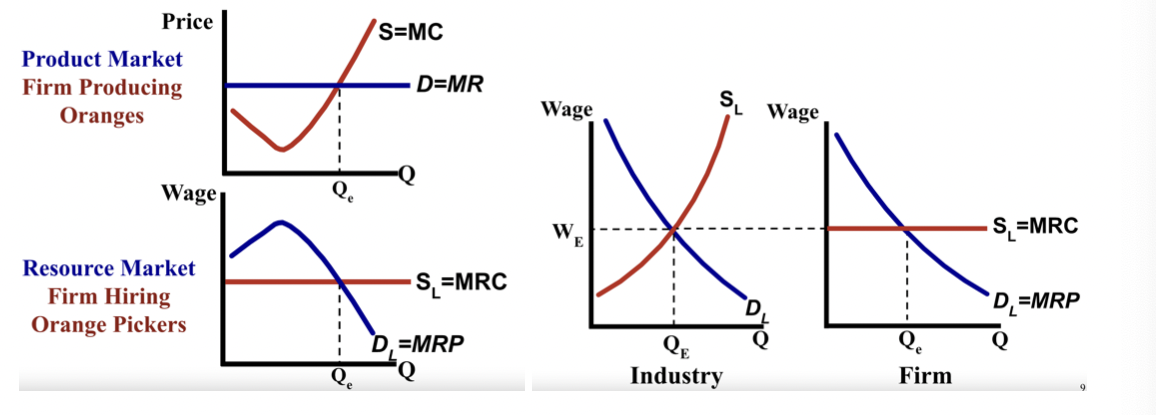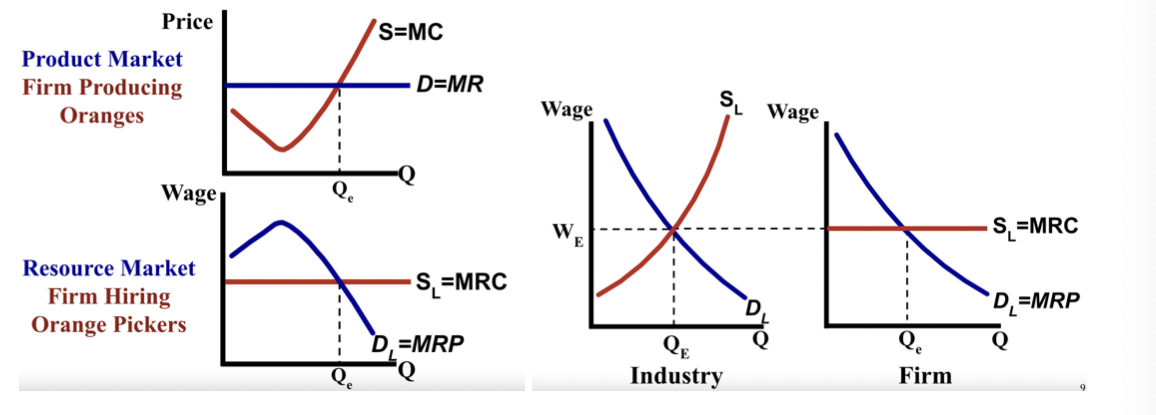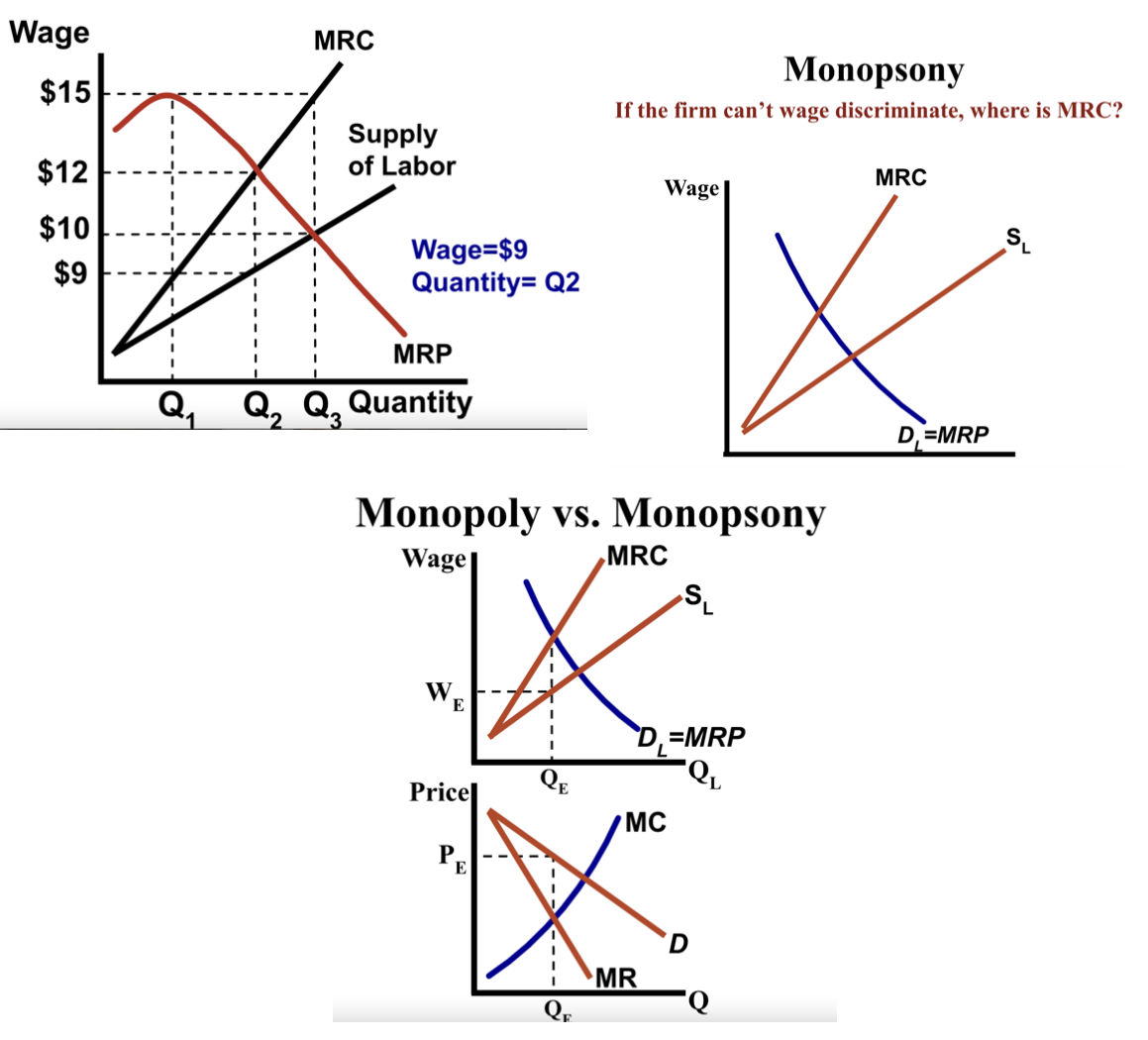microeconomics unit 5: factor markets
1/14
Earn XP
Description and Tags
business perspective
Name | Mastery | Learn | Test | Matching | Spaced |
|---|
No study sessions yet.
15 Terms
what are the payments made for the use of the factors of production (land, labor, capital, entrepreneurs)?
land: rent
labor: wage
capital: interest
entrepreneurs: profit
product vs factor market
product market: individuals pay businesses for goods and services; factor market: businesses pay individuals for resources
define demand for labor. what is the relationship btwn wage and quantity of labor demanded?
the different qualities of workers that businesses are willing and able to hire at different wages (willing and able of business). inverse relationship btwn wage and quantity of labor
define supply for labor. what is the relationship btwn wage and quantity of labor supplied?
the different quantities of individuals that are willing and able to sell their labor at different wages (willing and able of workers/individuals). direct relationship btwn wage and quantity of labor supplied.
what is marginal resource cost?
the additional cost of an additional resource (worker)
what is the formula for MRP in a perfectly competitive product market and for a general market?
MP x P; change total revenue/change inputs
what are 4 types of labor market imperfections?
insufficient/misleading job employment (prevents workers from seeking better employment)
geographical immobility (many people are reluctant or too poor to move so they accept lower wage)
unions (collective bargaining and threats lead to higher than equilibrium wages)
wage discrimination
what are 3 causes for a shift in demand for labor?
price of the output (price of product goes up, value of worker that produces it goes up— derived demand)
productivity of worker (more productive worker is more valuable)
change in the price of other resources (substitutes, complementary)
what are 6 causes that shift supply of labor?
education and training
availability of alternative options
immigration and mobility of workers
cultural expectations
working conditions
preferences for leisure
what are 5 characteristics of profit maximizing behavior in a perfectly competitive factor market?
many small firms are hiring workers
many workers have identical skills
wage is constant
workers are wage takers
hire until MRP = MRC
what is the elasticity of demand in a (perfectly) competitive product market?
perfectly elastic (notice D is horizontal in product market and MRP = D)

what is the elasticity of supply of a (perfectly) competitive labor/resource market?
perfectly elastic (notice S is horizontal in labor market and MRC = S)

what market is a subcategory of imperfect competition?
monopsony markets
what are characteristics of a monopsony?
one firm hire workers
workers are relatively immobile
firm is a wage maker (to hire more, the firm must increase wage)
how is a monopsony depicted in a PPC? (where is MRC, where is Qe, where is We, what represents D?)
MRC ≠ S— MRC above S
MRC = MRP (Qe)
Wage = S (We)
MRP = D
